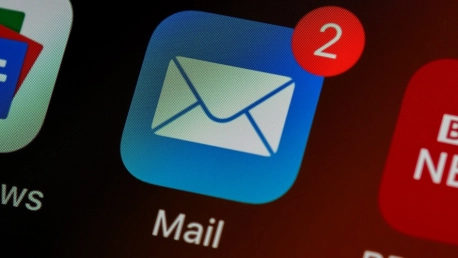The terms “spam” and “phishing” are often used interchangeably. Yet, they refer to distinct types of deceptive and unwanted cyber communications. Both forms of communication aim to trick individuals into divulging personal information, such as login credentials or personal details, or interacting with dangerous links or files. Despite the similarities, these two terms have different connotations. It is critical to understand the difference between them. This article aims to highlight the differences between spam, scam, and phishing regarding emails, phone calls, and text messages. We will focus on explaining the differences between them to provide a better understanding of these topics.
What is Spam?
Spam refers to any unsolicited or unwanted commercial message. The term dates back to the 1980s and originated from a Monty Python skit that mocked the canned meat product “Spam.” The founder of the first internet-based business, Brad Templeton, defines spam as a message that repeats so much that it becomes annoying.
The purpose of spam is to market and promote products and services by flooding as many people as possible with messages. According to research from Statista, spam makes up 45% of all emails. For example, between October 2020 and September 2021, global daily spam volume peaked at almost 283 billion spam emails in July 2021, from 336.41 billion sent emails.
Spam messages are not targeted. Instead, they are sent to the public with the idea that someone, somewhere, will eventually reply. There are three common forms of spam:
- Email messages
- Telemarketing and robocalls
- SMS messages
Although spam is not as dangerous as phishing, users should still be cautious. Spam messages often attempt to obtain personal information for future spam campaigns and can sometimes be malicious.
Spam emails are unsolicited commercial messages that flood inboxes and must not be confused with related emails. The latter are legitimate business communications between a company and current or potential customers. Spam emails are not harmful, but can contain security vulnerabilities that hackers exploit. On the other hand, relationship emails are exempt from anti-spam regulations, and they do not have aspects that make the recipient vulnerable to cyberattacks.
What is Phishing?
Phishing is more dangerous than spam. Hackers design these communications to appear legitimate to manipulate individuals into doing something they normally wouldn’t. The distinction between spam and phishing lies in the sender’s motives and the content of the messages.
The goal of phishing emails is to trick users into sharing personal information, clicking links, or interacting with malicious attachments. These links can be used to steal login credentials or download malicious software, while attachments, will try to install malware. All of these actions are harmful to the user.
The six most common forms of phishing include:
- Phishing emails (such as whale phishing and spear phishing)
- Phone calls (known as vishing)
- SMS messages (known as smishing)
- Wi-Fi port phishing (also called evil twin)
- HTTPS phishing
- Phishing fisherman (cloning of social media posts and profiles)
According to IBM’s 2022 Cost of Data Breach Report, while compromised credentials are the most common cause of breaches (19%), phishing is the second (16%). Phishing is also the costliest cause, with an average breach cost of $4.91 million per organization.
When companies send numerous unsolicited text messages for commercial purposes, which are not intended to be harmful, they are referred to as spam text messages or spam SMS messages. These messages can include information regarding a specific product, special offers, discounts, deals, coupon codes, or other types of incentives. Additionally, there might be links in these messages that direct the recipient to the product or service website.
Spamming is notably less malicious than phishing. Scammers use phishing emails, phone calls, and text messages pretending to be reputable companies. The goal is to deceive their target into providing personal information, such as bank details. Phishing fisherman slightly differs but is just as severe. When scammers clone and infiltrate social media accounts, this is a case of phishing fisherman. There are many methods scammers use for phishing, but the theme remains the same—to trick vulnerable people into trusting the scammer and divulging their personal information, only to have it exploited.
Email Scam
Email scams are deceitful emails aiming to obtain sensitive information, such as bank accounts and passwords, from their targets. They fall under the broader category of phishing attacks. Scammers use this tactic to gain money from unsuspecting individuals. One might ask how they received these malicious emails. Cybercriminals can obtain email addresses through data breaches, subscriptions to fraudulent websites, public sources (social media), or by illegally acquiring user data.
According to Avast, cybercriminals impersonate big brands, like Amazon, PayPal, or Best Buy during the Holidays. They convince their targets by offering them an incentive like a discount or making them believe they have won a reward. Scammers are becoming rapidly innovative and resourceful. They know how to make these emails look consistent to the brand they are impersonating and legitimate to the receiver. Most often, those who try to scam you via email want your card details or pressure you to purchase products or gift vouchers.
Conclusion
Distinguishing between spam and phishing can be challenging. Spam is typically seen as less harmful, while phishing enables cybercrime. However, when spam violates specific laws by utilizing misleading content, the sender’s address, or dangerous links/attachments, the difference between spam and phishing becomes blurred. Spam can be gravely frustrating, but phishing can result in cybercrime. The sole intent of phishing scams is to trick the target into sharing their personal information by impersonating a trusted organization, while spam emails do not share this intent. Stay updated with the latest spam and phishing trends to keep your data and personal information secure.








